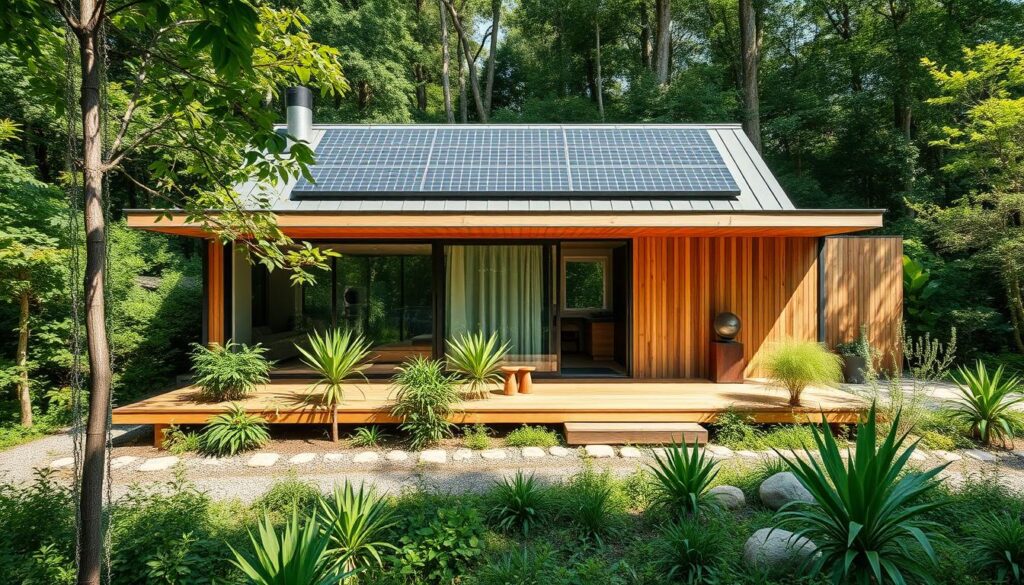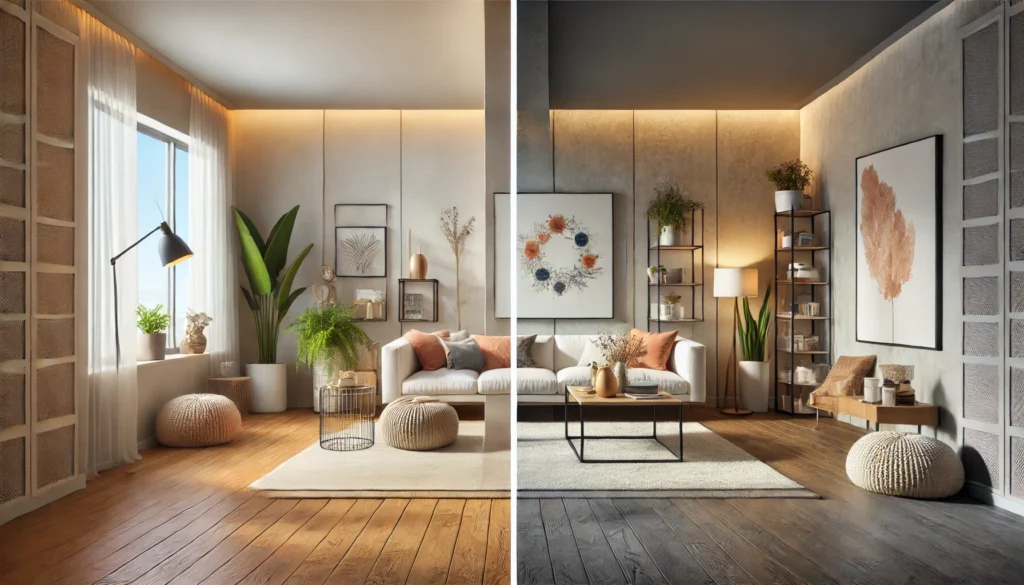In the ever-evolving world of interior home design, certain trends stand the test of time, offering enduring appeal and functionality. Whether you’re embarking on a full-scale renovation or simply looking to refresh your living space, these timeless interior design trends will help you create a stylish and lasting aesthetic that will never go out of fashion. Let’s explore ten key elements that form the foundation of timeless interior home design and discover how to incorporate them into your own space.
1. Neutral Color Palettes: The Canvas of Timeless Design
Neutral colors form the backbone of timeless interior design. Shades like white, beige, gray, and black provide a versatile canvas that can be easily updated with accent colors. These hues create a sense of calm and sophistication, allowing other design elements to shine. When implementing a neutral color scheme in your interior home design, consider the following tips:
- Use different textures within your neutral palette to add depth and interest
- Experiment with various shades of the same color to create subtle contrast
- Incorporate pops of color through accessories for easy updates
2. Natural Materials: Bringing the Outdoors In
Incorporating natural materials like wood, stone, and metal brings warmth and texture to any interior. These elements connect us to nature and add a timeless quality to our living spaces. From hardwood floors to stone countertops, natural materials are both durable and aesthetically pleasing. Consider these ideas for integrating natural materials into your interior home design:
- Install hardwood flooring for a classic, warm look
- Use stone or marble for kitchen countertops and bathroom vanities
- Incorporate metal accents through light fixtures or hardware
3. Classic Furniture Pieces: Investing in Timeless Style
Investing in well-crafted, classic furniture pieces ensures your home will look stylish for years to come. Look for items with clean lines and timeless silhouettes, such as Chesterfield sofas or Eames chairs. These pieces can easily be mixed with more contemporary elements to create a balanced, eclectic look. When selecting furniture for your interior home design, keep these points in mind:
- Choose quality over quantity
- Opt for neutral upholstery that can be easily updated with throw pillows
- Mix different styles and eras for a curated, collected look
4. Symmetry and Balance: Creating Visual Harmony
Creating a sense of symmetry and balance in your interior design is a timeless principle that never fails to impress. This approach brings a feeling of order and calm to any space, making it visually appealing and comfortable. To achieve symmetry and balance in your interior home design:
- Arrange furniture in pairs
- Use matching lamps or artwork on either side of a focal point
- Create visual balance through color and texture distribution
5. Statement Lighting: Illuminating with Style
Lighting is not just functional; it’s an essential design element. Incorporating statement lighting fixtures, such as chandeliers or pendant lights, can elevate the entire look of a room. Choose pieces that complement your overall design style while serving as focal points. When selecting lighting for your interior home design, consider:
- Scale and proportion in relation to the room size
- The mood you want to create (e.g., warm and cozy vs. bright and energizing)
- Layering different types of lighting (ambient, task, and accent)
6. Texture and Layering: Adding Depth and Interest
Adding texture through fabrics, rugs, and accessories creates depth and interest in your interior design. Layering different textures, such as combining smooth surfaces with rough ones, adds visual complexity and tactile appeal to your space. To incorporate texture and layering in your interior home design:
- Mix different fabric textures in upholstery and window treatments
- Layer rugs for added warmth and visual interest
- Use textured wallpaper or wall treatments for added dimension
7. Minimalism with a Twist: Simplicity Meets Personality
While trends may come and go, a minimalist approach to design remains timeless. However, adding a personal twist to minimalism ensures your space doesn’t feel sterile. Incorporate carefully chosen accessories or artwork to inject personality into your minimalist design. To achieve minimalism with a twist in your interior home design:
- Choose a few statement pieces to serve as focal points
- Incorporate personal items that tell your story
- Use negative space strategically to highlight key elements
8. Biophilic Design: Connecting with Nature
Bringing elements of nature indoors through plants and natural light is a trend that continues to gain popularity in interior home design. Indoor plants not only add visual interest but also improve air quality and contribute to a sense of well-being. Large windows that allow natural light to flood in create a connection with the outdoors and make spaces feel larger and more inviting. To incorporate biophilic design:
- Add a variety of indoor plants in different sizes and textures
- Maximize natural light with sheer window treatments
- Use natural materials and colors inspired by nature
9. Personalized Art and Accessories: Telling Your Story
Your home should reflect your personality and experiences. Incorporating personalized art pieces, family heirlooms, or souvenirs from your travels adds character and tells your unique story. These elements create a sense of authenticity and make your space truly your own. To personalize your interior home design:
- Create a gallery wall with a mix of personal photos and artwork
- Display meaningful objects on shelves or in curated vignettes
- Incorporate handmade or artisanal pieces that reflect your interests
10. Open Floor Plans and Multifunctional Spaces: Flexibility for Modern Living
The trend towards open, flexible living spaces shows no signs of waning. Open floor plans create a sense of spaciousness and allow for better flow and interaction. Designing multifunctional spaces that can adapt to changing needs ensures your home remains practical and stylish over time. To implement this trend in your interior home design:
- Remove non-load-bearing walls to create an open concept
- Use furniture and area rugs to define different zones within an open space
- Invest in versatile furniture pieces that can serve multiple purposes
Embracing Timeless Design: Tips for Implementation
When incorporating these timeless interior design trends into your home, consider the following tips:
- Focus on quality over quantity
- Invest in pieces that you truly love
- Don’t be afraid to mix different styles and eras
- Pay attention to proportion and scale
- Use color strategically to create mood and atmosphere
The Role of Technology in Interior Home Design
As we embrace timeless design principles, it’s worth noting the growing role of technology in interior home design. AI-powered interior design tools are revolutionizing the way we plan and visualize our spaces. These innovative platforms allow you to experiment with different layouts, color schemes, and furniture arrangements virtually before making any physical changes to your home. One such tool worth exploring is [AI Interior Design Tool Name]. This cutting-edge software uses artificial intelligence to analyze your space, preferences, and budget, offering personalized design recommendations that align with timeless principles. It can help you visualize how different elements will work together, ensuring a cohesive and balanced interior home design.
Conclusion: Creating a Timeless Haven
Timeless interior design is about creating spaces that stand the test of time while reflecting your personal style. By embracing these 10 trends, you can design a home that feels fresh and relevant for years to come. Whether you’re starting from scratch or looking to update your current space, these principles will guide you towards creating an interior that’s both beautiful and enduring. Remember, great interior home design is about creating spaces that make you feel at home – so trust your instincts and have fun with the process.
By focusing on these timeless elements and leveraging modern tools like AI-powered design software, you can create a living space that’s not only stylish but also uniquely yours. As you embark on your interior design journey, keep in mind that the most timeless spaces are those that evolve with you. Don’t be afraid to make changes and updates as your tastes and needs change. With these timeless principles as your foundation, you’ll be well-equipped to create a home that you’ll love for years to come.


